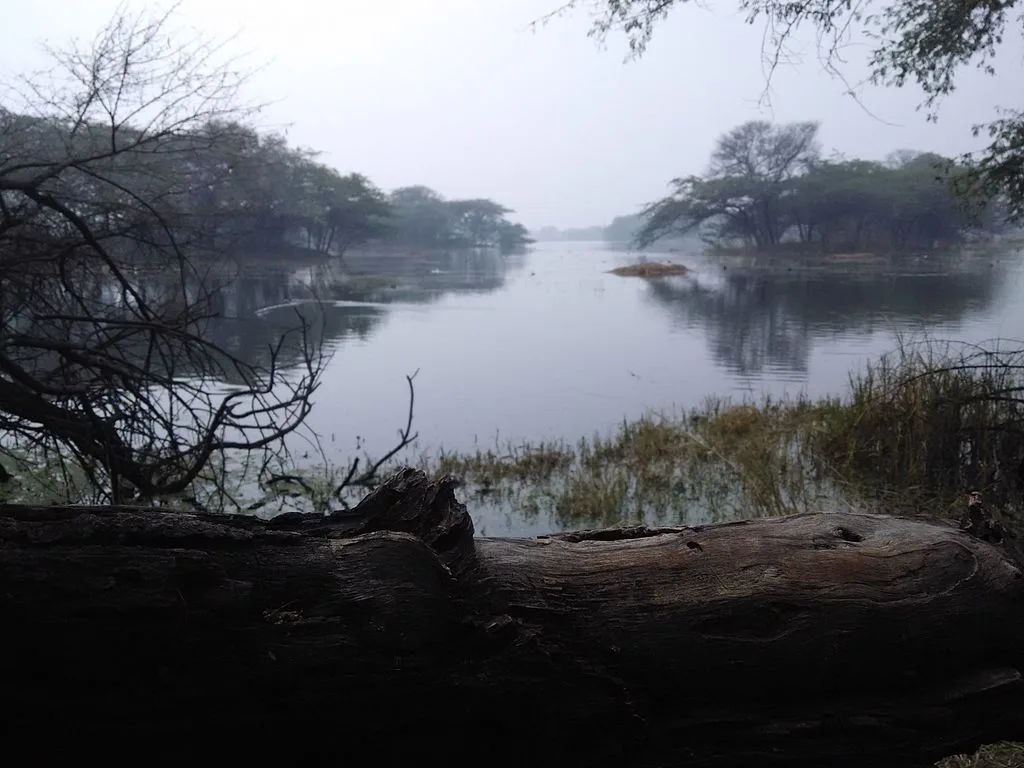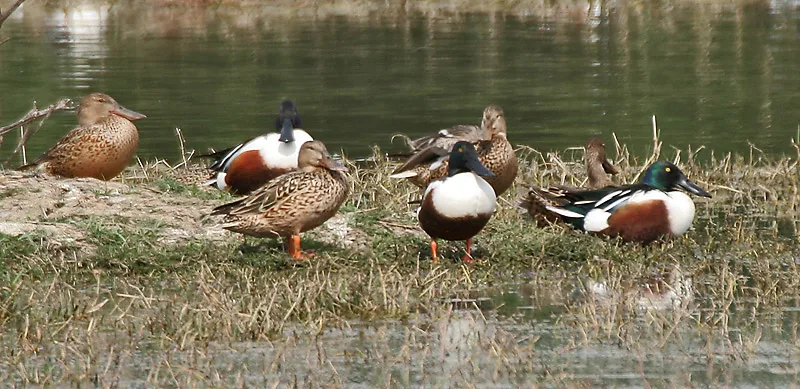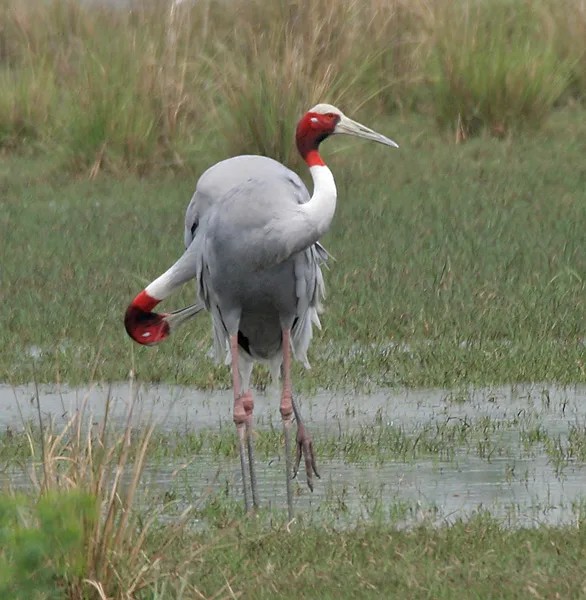If you’re a bird enthusiast, there’s a serene oasis not far from the bustling city of Delhi that’s waiting to offer you a captivating avian experience – Sultanpur National Park. Tucked away in the state of Haryana, this park is a haven for birdwatchers, photographers, and nature lovers. With its diverse range of bird species, tranquil landscapes, and easy accessibility, Sultanpur National Park promises an immersive birdwatching escapade like no other.
A Tapestry of Natural Beauty

Imagine a tranquil morning where the only sounds are the melodic trills of birds and the gentle rustling of leaves. This is the ambiance that envelops Sultanpur National Park. The park’s serene ambiance is a welcome respite from the urban chaos, making it an ideal destination for anyone seeking solace in nature.
The park’s landscape is a symphony of wetlands, grasslands, and woodlands. As you meander through its pathways, you’ll encounter breathtaking vistas that transition seamlessly from one habitat to another. The still waters of the wetlands reflect the azure sky, creating a canvas of serenity. The rustling grasslands are a playground for terrestrial birds, while the towering trees resonate with the calls of both resident and migratory species.
Flora and Fauna: A Haven for Birdlife

Sultanpur National Park boasts a diverse ecosystem encompassing wetlands, grasslands, and woodlands. These varied habitats attract an impressive array of bird species. As you traverse the park’s pathways, you’ll be greeted by the sight of colorful birds flitting among the trees and wading in the tranquil waters.
The wetlands are adorned with water lilies and lotuses, creating a picturesque setting that’s a treat for both nature enthusiasts and photographers. The surrounding grasslands provide a haven for terrestrial birds, while the trees are abuzz with the calls of both resident and migratory species.
Moreover, the park’s flora and fauna are intertwined in a delicate dance of life. The tall grasses provide shelter to smaller creatures, while the trees offer nesting sites for birds. The park’s biodiversity extends beyond birds to include various mammals, reptiles, and insects, all contributing to the intricate web of life within the park’s boundaries.
Avian Extravaganza: Resident and Migratory Birds

Sultanpur National Park hosts a remarkable 250 species of birds, making it a treasure trove for birdwatchers. The park’s bird population includes resident birds and migratory visitors who journey here during winter. This annual migration transforms the park into a bustling avian hub.
Among the show’s stars are the striking Sarus Crane and the vibrant Indian Roller. These charismatic birds often steal the spotlight with their elegance and distinctive appearances. During the winter, the park welcomes migratory visitors like the Common Teal, Rosy Pelican, and Northern Shoveler. Each season brings its own cast of avian characters, offering birdwatchers a constantly evolving spectacle.
Planning Your Birdwatching Expedition
Sultanpur National Park is conveniently located, making it an accessible destination for a day trip or a weekend getaway. While the park can be explored independently, engaging a knowledgeable guide can enhance your birdwatching experience. Guides are familiar with the park’s bird habitats, behaviors, and prime viewing spots.
A guided tour also allows you to gain insights into the ecological significance of the park and its conservation efforts. Learning about the efforts to protect and preserve the avian residents adds a layer of appreciation to your birdwatching adventure.
Before embarking on your journey, it’s recommended to research and connect with local guides or birding tour operators. Their expertise can elevate your experience by providing valuable information about the park’s avian inhabitants and the best times for birdwatching.
Where to Stay: Proximity and Accommodation
While Sultanpur National Park is well-suited for day trips, if you wish to extend your stay, nearby accommodations are available. From boutique hotels to guesthouses, you can find options that cater to various preferences and budgets. Staying in proximity to the park allows you to maximize your birdwatching hours, especially during the early morning and late afternoon when bird activity peaks.
Immersing yourself in the ambiance of the park from sunrise to sunset enhances your chances of encountering a diverse range of bird species. The sounds of the avian world as day turns into night create a symphony that lulls you into a sense of tranquility.
The Perfect Time to Visit
The best time to visit Sultanpur National Park for birdwatching is during the winter months, from October to March. This period aligns with the arrival of migratory birds seeking refuge from the harsh winters of their breeding grounds. The cool weather and clear skies provide excellent conditions for birdwatching and photography.
The early morning hours offer a magical experience as the sun rises over the horizon, bathing the wetlands in soft golden light. This is when birds are most active, engaging in feeding, preening, and social interactions. It’s a photographer’s dream come true.
Getting There: Journey to Serenity
Sultanpur National Park is conveniently located approximately 50 kilometers from Delhi. The park is easily accessible by both private and public transport. A drive from the city takes you through the picturesque countryside, offering glimpses of rural life and the ever-changing landscape.
The journey itself can be a part of your adventure. The transition from the city’s hustle and bustle to the tranquility of the park is a reminder of nature’s rejuvenating power.
Beyond Birdwatching: Exploring Nature’s Bounty

While birdwatching takes center stage, Sultanpur National Park offers more than avian delights. The park is also home to various mammals, such as the Blackbuck, Nilgai, and Indian Hare. Observing these creatures in their natural habitat adds depth to your wildlife experience.
Exploring the park’s various trails reveals a world of biodiversity beyond birds. The vibrant insect life, colorful butterflies, and seasonal blooms are a delight for macro photography enthusiasts. The park’s natural tapestry is a canvas waiting to be explored.
Tips for a Fulfilling Experience
- Binoculars and Camera Gear: Carry quality binoculars and a camera with a versatile lens. Birds can be at varying distances, and versatility in your gear is key.
- Appropriate Attire: Wear comfortable and neutral-colored clothing to blend in with the surroundings. A hat, sunglasses, and sunscreen are essential for protection.
- Silence and Stillness: Move quietly and avoid sudden movements to avoid startling birds. Patience rewards you with candid shots.
- Respect Nature: Admire birds from a distance, and avoid feeding them or disturbing their habitats.
Capturing Moments of Avian Beauty
Sultanpur National Park is a testament to the diverse beauty of India’s avian inhabitants. The melodies of birds, the sight of colorful plumage, and the serenity of the wetlands offer a symphony for the senses. As you capture these moments through your lens, you’re not just taking photographs; you’re creating visual stories that celebrate the marvels of the natural world.
Whether you’re an experienced birdwatcher or a curious beginner, Sultanpur National Park invites you to immerse yourself in its vibrant ecosystem. It’s an invitation to witness the elegance of birds
in flight, the grace of their movements, and the harmony of nature. So, grab your binoculars, prepare your camera, and embark on a journey that promises to be a feast for the eyes and a balm for the soul.
